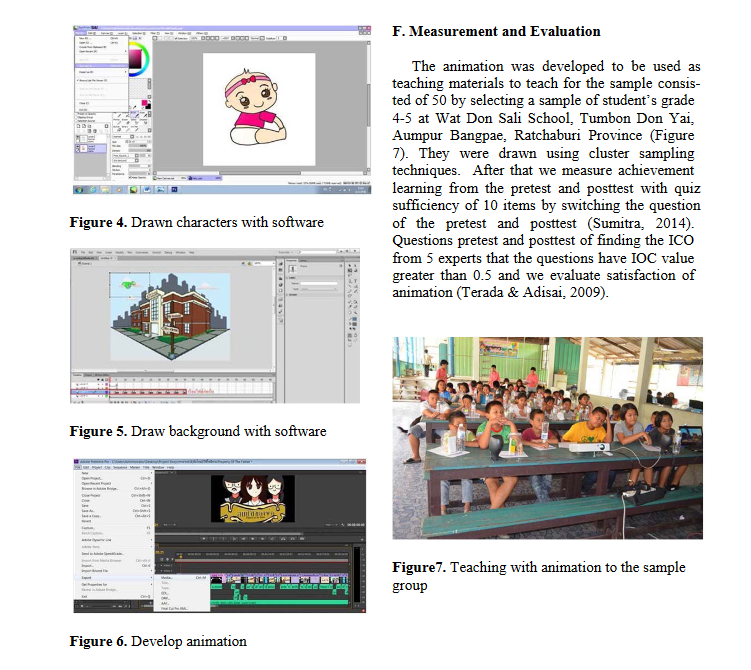Development of Animation Teaching Media on the Topic of The Property of The Father
Keywords:
Animation, Teaching media, SufficiencyAbstract
The objective of this research was to develop animation teaching media on the topic of The Property of the Father to teach for students to understand the concept of sufficiency. The animation was developed to evaluate the performance of a sample of 50 grade 4-5 students at Wat Don Sali School. The results were as the achievement of the students who were taught with the animation was .05 significantly and students had a high level of satisfaction with the animation.
References
Adisor, J. (2008). Creation of 3D animation film for campaigning the bicycle use to decrease global warming. Chiang Mai, Thailand:
Chiang Mai University.
Akamca, G. O., Ellez, A. M. & Hamurcu, H.(2009). Effects of computer aided concept cartoons on learning outcomes, Procedia Social
and Behavioral Sciences, 1, 296-301.
Becker, W. E., Watts M. & Becker, S. R. (2006).Teaching Economics: More Alternatives to Chalk and Talk. Massachusetts: Edward Elgar.
Cingi, C. C. (2013). Computer animation in teaching surgical procedures. Procedia-Social and Behavioral Sciences, 103, 230-237.
Connor, D. J. (2009). Creating cartoons as representation: visual narratives of college students with learning disabilities. Educational
Media International, 46(3), 185-205.
Hall, J. (2005). Homer economicus: using Simpsons to improve economic instruction through policy anaysis, Journal of Private Enterprise, 20(Spring), 84-92.
Klein, G. & Bauman, Y. (2010). The cartoon introduction to economics, volume one:microeconomics. New York: Hill and Wang.
Luccasen, R. A., Hammock, M. & Thomas, M. K.(2011). Teaching macroeconomic principles using animated cartoons. American Econo-
mist, 56(1), 38-47.
McTaggart, D., Findlay, C. & Parkin, M. (2010).Macroeconomics. Queensland: Pearson Australia.
Patcharin, P. & Suwich, T. ( 2012). A development of 2D cartoon animation to safe driving promotion a case study Mahasarakham
University. Singapore: IACSIT Press.
Phunchan, T. (2013). Multimedia animation with flash CS6 complete. Bangkok: Simplify.
Shannon, E. M. (2009). Getting the animated message: effects of animated public service announcements designed for children on adults.
Retrieved from http://sunzi1.lib.hku.hk/ER/detail/hkul/30766-70.
Sumitra, N. (2014). Development of social network competency-based training package to promote community enterprise. RMUTSV
Research Journal, 6(2), 47-59.
Sweller, J. (1994). Cognitive load theory, learning difficulty, and instructional design. Learning and Instruction, 4, 247-262.
Terada, P. & Adisai, T. (2009). Statistics for Research. Nonthaburi: Fern kha Luang Printing & Publishing.
Vygotsky, L. (1960). Thought & Language.Cambridge, MA: MIT Press.
Vygotsky, L.(1978). Mind in Society.Cambridge, MA: Harvard University Press.













